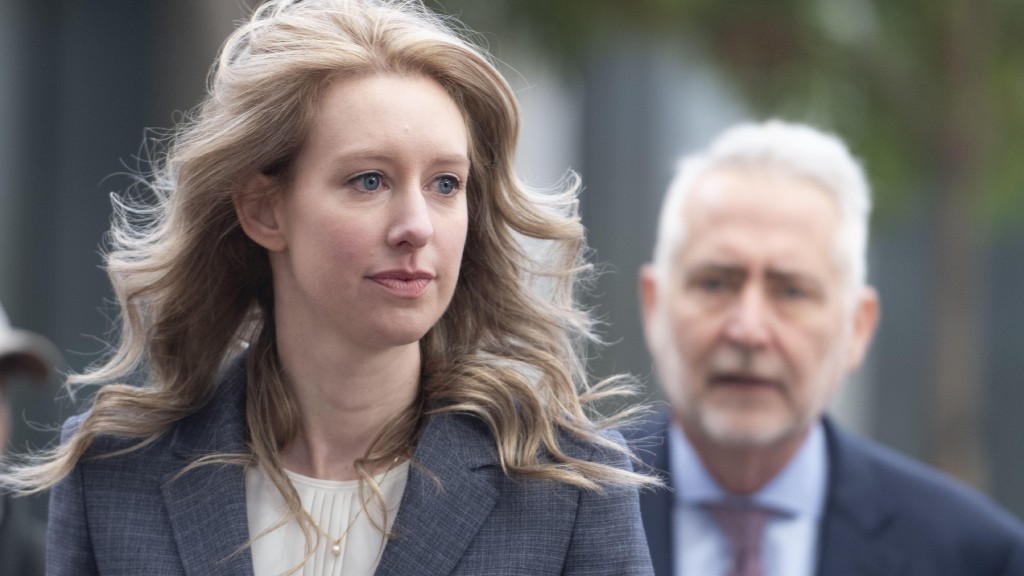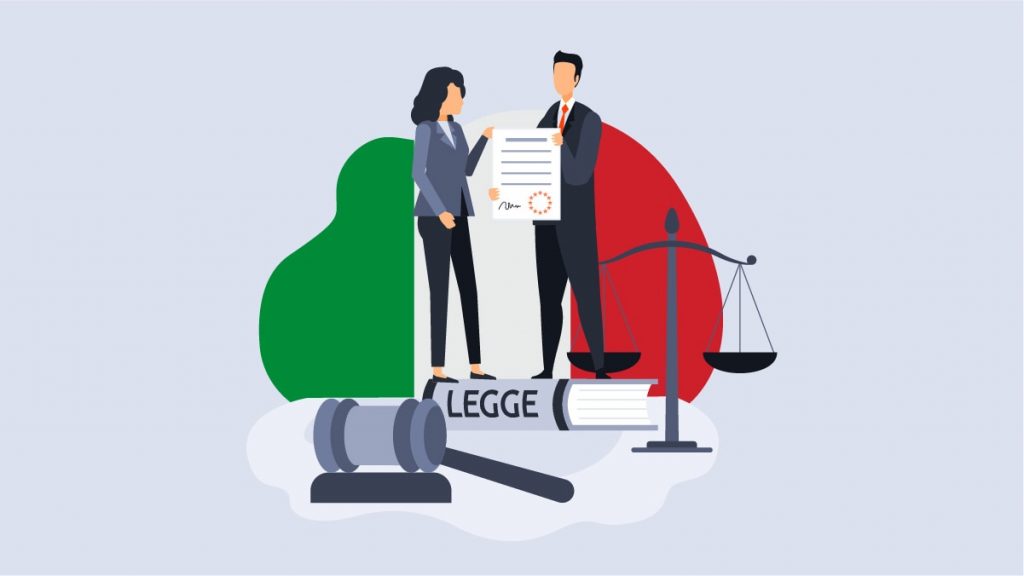In 2021, Holmes was on trial in California for fraud. Through whistleblower revelations and the research of a Wall Street Journal Reporter, it came to light that more than 200 blood tests that Theranos advertised could not be performed on the company’s specially developed “Edison” machine while results of the few tests it could handle were flawed and unreliable. Patients were misdiagnosed with everything from diabetes to cancer. Holmes also promised investors a much higher company profit than Theranos actually made. On January 03, 2022, Holmes was found guilty on four counts of defrauding investors – three counts of wire fraud and one of conspiracy to commit wire fraud. In November 2022, she was sentenced to 11 years in prison and she started serving her time in May 2023 .
How did it come to this? This is an overview of the Theranos case:
The idea
During her first year at Stanford in 2003, Elizabeth Holmes developed the idea of creating a patch that would test microscopic blood samples for infectious diseases and dose antibiotics for treatment. She even filed the necessary for paperwork to acquire a patent.
A short time later, this gave rise to the business idea of Theranos whereby patients should no longer be required to hand over several tubes full of blood for blood testing. Instead, just a few drops should be enough to look for markers of cholesterol, diabetes, cancer and a range of other diseased. Samples were taken with a specially designed blood collection pen (similar to the way diabetics measure blood sugar levels) and analysed in the company’s specially developed mini-laboratory device called “Edison”.
Theranos promised to make blood tests easier, faster and cheaper. Patients would benefit not just from a less painful procedure but also from cheaper tests which can currently prove expensive under the American health system. In doing so, the company would have challenged US market leaders such as Labcorp and Quest Diagnostics, who use tubes of blood for tests while the results take several days. Holmes’ business idea promised billions in sales.
Whistleblowing Laws in the European Union
A glance at the implementation of the EU Whistleblowing Directive in EU Member States
The rise
After dropping out of Stanford, Holmes used the money her parents had saved for her education as seed money for Theranos. She convinced her Stanford professor, Channing Robertson, of her idea and recruited him as the first board member. Robertson put Holmes in touch with venture capitalists and she had raised $6 million in capital by the end of 2004. Initially, the company operated in “stealth mode” without a corporate website or press releases. Although Holmes entered the limelight in 2013 and quickly turned into a media star, the aura of mystery surrounding Theranos would persist until the company’s fall.
Holmes is said to have worshipped and emulated Apple founder Steve Jobs. She hired Apple designers for the product design of the laboratory’s “Edison” device and she soon appeared wearing only black turtlenecks. Holmes also began to speak with a deeper voice.
She went public with this image in 2013. Two years later, the company entered into a partnership with US drugstore chain “Walgreens” whereby the company’s tests would be offered in more than 40 shops. Holmes promised that Theranos blood tests would soon be available within 5 miles of every American household. She claimed to investors and business partners that the tests were being used by the US military in their medivac helicopters, a claim she only recanted when questioned by investigators under oath.
Holmes became a media star and celebrated visionary, appearing on the cover of Fortune, Forbes and Inc. In 2015, Theranos was valued at $9 billion and with Holmes considered the youngest self-made billionaires in the US, she landed on Time magazine’s list of the 100 most influential people. That same year, then Vice President Joe Biden visited the Theranos lab in Palo Alto and praised Holmes as an inspiration.
The supporters
Holmes was able to rally a powerful circle of supporters around her. As mentioned already, one of her first and most important advocates was Stanford professor Channing Robertson. Holmes had worked in his lab, Robertson became her mentor, and shortly afterwards the first board member at Theranos. The bioengineering expert helped the company gain scientific credibility externally and he received a lavish salary in return. He spent a significant period defending Holmes and Theranos against critical questions and doubts about the effectiveness of the technology. Whether Robertson was aware of the deficiencies himself remains an open question.
In 2011, Holmes met former US Secretary of State George Shultz and shortly afterwards, he too became a Theranos board member. With the help of his connections, the board was filled with influential people from politics and business over the next few years including former Secretary of State Henry Kissinger, former Secretary of Defence William Perry, former General Jim Mattis, and former Wells Fargo Bank CEO Richard Kovacevich.
Holmes received money for the startup from no less famous names: Walmart’s founding Walton family invested $150 million, media mogul Rupert Murdoch put in more than $120 million while former Secretary of Education Betsy DeVos contributed $100 million. They all lost their investments when Theranos collapsed.
The problems
In 2009, Ramesh “Sunny” Balwani joined Theranos. He took care of the day-to-day business but had no knowledge of biomedicine and had never worked in a tech start-up. Employees quickly realised he did not understand the processes and technologies in the lab. Due to his fiery temper, Balwani quickly became known in the company as an “enforcer”. Holmes hid the fact that she was in a relationship with Balwani from staff and the board.
Theranos claimed to be able to perform numerous tests for indications of diseases such as diabetes or cancer with just a few drops of blood. In the interviews with company founder Elizabeth Holmes, the number of tests that could supposedly be carried out varied: there was often talk of over 200 and a company profile in US business magazine Inc. in 2015 even spoke of more than 250. However, the “Edison” – the device supposed to carry out the tests – did not deliver what Theranos promised right to the very end, providing unreliable or false results. Only the test for the herpes virus was recognised as reliable by the US Food and Drug Administration (FDA) that July. In order to be able to perform the large number of advertised tests, Theranos obtained third-party equipment from Siemens but this was concealed from patients, business partners and investors. A 2015 FDA inspection also revealed shortcomings in the tests which Theranos only made public a few weeks later.
Employees in the laboratory drew attention to the problems with “Edison” and documented them in error reports. Those tips were ignored by company management. Instead of working on a solution to the problem, only the correct data was filtered out of the results of the test runs in the company and further evaluated. The wrong results were ignored. Holmes’ parter Balwani allegedly pressured doubting or critical employees. Former staff members describe the Theranos company culture as a mixture of distrust, psychological pressure and lies. Holmes herself allegedly lied to her co-workers about even minor details, claiming in emails, for example, to be out of the office even though she was still sitting at her desk just a few feet away. Numerous employees resigned or were fired if they asked too many questions or were too critical.
The whistleblowers
Tyler Shultz started working for Theranos in 2013 and he was an enthusiastic follower of Holmes’ vision. He was given a full-time position on the diagnostic team and he soon encountered problems with test results. Despite the erroneous results, reports were being documented in the internal statistics department while data was being altered. Shultz noticed that no one was exactly aware of the way “Edison” worked. Even inspectors were denied access to the laboratory where the machines were installed. This was because blood tests there were not run through Theranos’ own devices but through third-party equipment.
Lab assistant Erika Cheung also joined the company because she was excited by Holmes’ vision. Cheung worked in the Theranos lab for six months in 2013 and 2014 before also discovering that faulty test results were bring erased. When she had her own blood tested by a Theranos machine, the results indicated a vitamin D deficiency that conventional tests disproved. She brought the problems to the attention of Balwani but he questioned her competence. After six months at the company, Cheung was so alarmed by what was happening that she resigned. Theranos then began harassing Cheung, hiring private investigators who followed her. She later said she felt so threatened and monitored that she changed residence several times and got a prepaid phone so her calls could not be monitored.
Shultz also drew attention to the problems internally. He sought a conversation with Holmes but his concerns were not taken seriously. She refused to grant him a second discussion and asked him to summarise his observations in an email. The reply did not come from Holmes but from her partner Balwani who insulted and threatened Shultz in the email. He then turned to his grandfather, former Secretary of State George Shultz who sat on the board of Theranos, who refused to believe him at first. Tyler Shultz was advised to quit the company by his family and the situation culminated in a meeting at his grandfather’s house where Theranos lawyers urged him to sign a confidentiality agreement. He refused.
Like Shultz, Cheung was also pressured by company lawyers. After a Wall Street Journal reporter named John Carreyrou contacted her, she received a threatening legal action from Theranos’ high-profile corporate lawyer.
In 2015, Cheung wrote a letter to the Centers for Medicare & Medicaid Services (CMS), the regulatory agency, exposing the problems at the Theranos lab. The agency then undertook a surprise inspection of the start-up’s labs which uncovered numerous violations. Tyler Shultz, meanwhile, did not turn to the authorities but to reporter Carreyrou. With the help of Shultz’s information and his own research, Carreyrou published an internal article in October 2015 revealing that Theranos was not using its own machines for the blood tests and that the “Edison” device provided unreliable results. Theranos denied all the allegations as false while threatening Carreyrou and Shultz with lawsuits.
The drugstore chain Walgreens temporarily stopped working with Theranos. In January 2016, after unreliable results in the detection of a blood thinner, the state regulator CMS warned that Theranos tests endangered patient health. Three months later, law enforcement and the Financial Industry Regulatory Authority (SEC) began investigating Theranos. Balwani, who had run the company’s day-to-day operations, left the organisation.
Walgreens and other partners sued Theranos and the case ended in a settlement in 2017. In early 2018, the SEC announced charges against Elizabeth Holmes and her business partner Balwani. Holmes had to resign from her position as CEO and she was banned from running a publicly traded company for the next ten years. In June 2018, California law enforcement filed charges against both Holmes and Balwani. Theranos was shut down in September of the same year.
Speak-up-culture and whistleblowing
Erika Cheung and Tyler Shultz became whistleblowers because their concerns were not taken seriously by the company. Cheung had approached the number two person – Balwani – to bring Theranos’ handling of the erroneous test results to his attention. Instead of taking Cheung seriously, he cast doubt on her competence. After she left the organisation in disillusionment, Theranos threatened her with legal action.
Shultz first addressed his observations directly to CEO Elizabeth Holmes and she asked him to write down his criticisms. Even though the company had the evidence of misconduct in black and white, they did not initiate an investigation, instead reacting with reprimands and reprisals. Shultz was insulted and threatened by Balwani in an email.
By taking this approach, Theranos undermined one of the central pillars making up good corporate compliance: a healthy speak-up culture where employees can point out problems or wrongdoing in a company without fear. A healthy speak-up culture – for example through a whistleblower hotline or a digital whistleblower platform with binding rules – can protect a company from what Theranos experienced. By taking tips and whistleblowers seriously and investigating their observations, countermeasures can be taken in time to solve problems internally.
If companies neglect or prevent an open speak-up culture and trustful dealings with whistleblowers, the Theranos case shows just how severe the consequences can be. Because both whistleblowers felt they were not taken seriously by those responsible and were turned away, they eventually alerted organisations and press representatives outside the company. The misconduct at Theranos and the reaction to it were thus taken out of the start-up’s hands. Revelations in the press, inspections by regulators, punitive measures, bankruptcy, the closure of the company and indictment of all those responsible followed.
The process
Three years after the end of Theranos, the trial of founder Elizabeth Holmes got underway in California on August 31, 2021. She is now separated from Balwani and is in a relationship with wealthy heir William “Billy” Evans” – the two had their first child in July 2021 and in March 2023 it was revealed that she had given birth to a second child after her conviction.
Prosecutors accused Holmes of intentionally misleading investors and patients. Out of the more than 200 blood tests advertised, the in-house “Edison” machines could perform a very small number themselves and could not provide accurate results. Holmes is also alleged to have lied about the scale of the companys profits.
Also charged was her former business partner Balwani. Holmes carried on a relationship with him during his time at the company which she kept secret from employees and investors. Balwani was also accused of multiple counts of fraud. Holmes’ lawyers managed to have the trials of the two heard separately and she was the first to stand trial. Balwani’s trial was delayed and he was eventually found guilty of deceiving investors in July 2022. On December 07, 2022, he was sentenced to 12 years and 11 months in prison, plus three years of probation. He started serving his sentence on March 15, 2023.
In the first week of Holmes’ trial, the prosecution presented its case with numerous documents and high-profile witnesses: former laboratory director Adam Rosendorff spoke in detail about the faulty results that the “Edison” device threw out. He also testified that he had informed Holmes of the problems but that she had brushed aside his concerns. When Rosendorff left the company in 2014, Theranos hired a new lab director: Balwani’s dermatologist who had no experience in such a role.
Two of the most striking examples of the Theranos machines’ faulty test results were two female patients. One of the women was diagnosed as HIV positive but the finding was refuted by further blood tests. A second woman who had suffered several miscarriages received test results from Theranos during her pregnancy which indicated that she had lost her baby once again. The test was faulty and she later gave birth to a healthy baby. Internal emails, however, revealed that the start-up concealed the erroneous results from investors and business partners by using a modified demo device or by partially hiding test results from them.
The prosecution also presented a 55-page report in which Theranos officials added the logos of pharmaceutical companies GlaxoSmithKline, Pfizer and Schering-Plough to give the impression that they had approved the technology. However, a scientist employed by Pfizer testified that he found the start-up’s claims to be implausible and advised Pfizer not to collaborate. The prosecutors were able to show that Theranos had nevertheless sent the report with the subsequently inserted logos to investors and business partners.
Investor and former US Secretary of Defence General James Mattis who sat on Theranos’ board of directors also took to the stand. He described Holmes as his primary source for all information about the company and its technology. He submitted a presentation to the court which she had made to the board. It claimed, among other things, that the technology had also been validated by the US Food and Drug Administration (FDA) and the World Health Organisation (WHO), neither of which happened. There were two big surprises at the trial. While Erika Cheung testified in court, Tyler Shultz was not called to the stand. As well as that, Holmes testified at the end of November, contrary to all expectations.
She stated that she had been raped as a student at Stanford and that she dropped out of her studies and concentrated on Theranos afterwards. In her seven-day testimony, Holmes also accused her former partner Balwani of psychological and sexual abuse. As an 18-year-old, Holmes had met Balwani who was 20 years her senior and was in a relationship with him for a decade. He allegedly patronised and controlled her, starting with her diet to contact with her family and decisions at work. She tried to refute the accusation that she had given false information about a contract with the military as a misunderstanding. She stated that she regretted the falsified report with the company logos inserted. She also admitted that she had harassed former employees such as whistleblowers Erika Cheung and Tyler Shultz with private investigators and lawyers.
More to the Theranos case
Podcast “The Dropout” and the biographical miniseries of the same name reconstruct Elizabeth Holmes’ role from the rise to the fall of the company, following the trial against her. John Carreyrou who publicised the Theranos fraud in the Wall Street Journal has written the book “Bad Blood: Secrets and Lies in a Silicon Valley Startup” about his research and the case. He also hosts the podcast “Bad Blood: The Final Chapter” about the trial.









